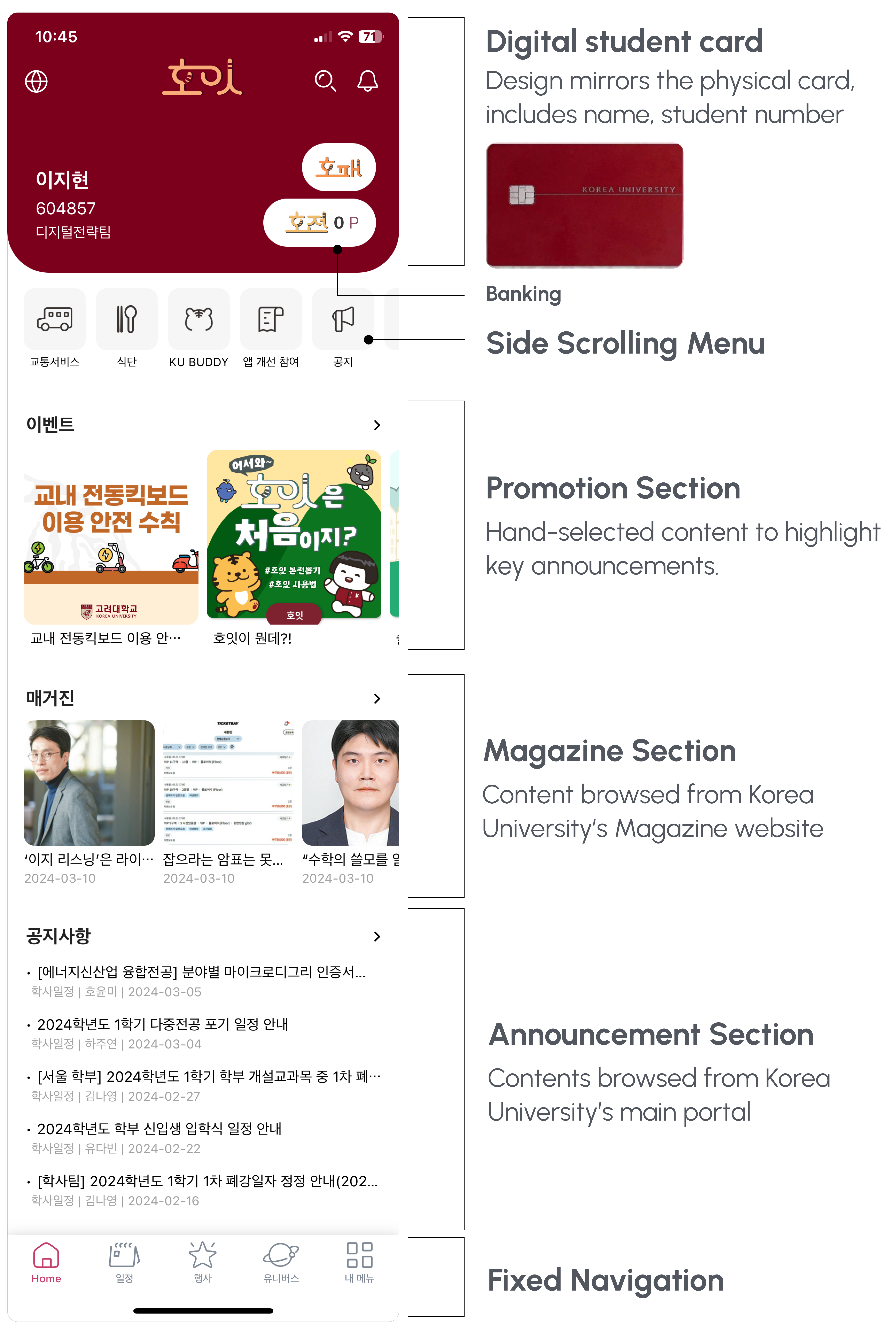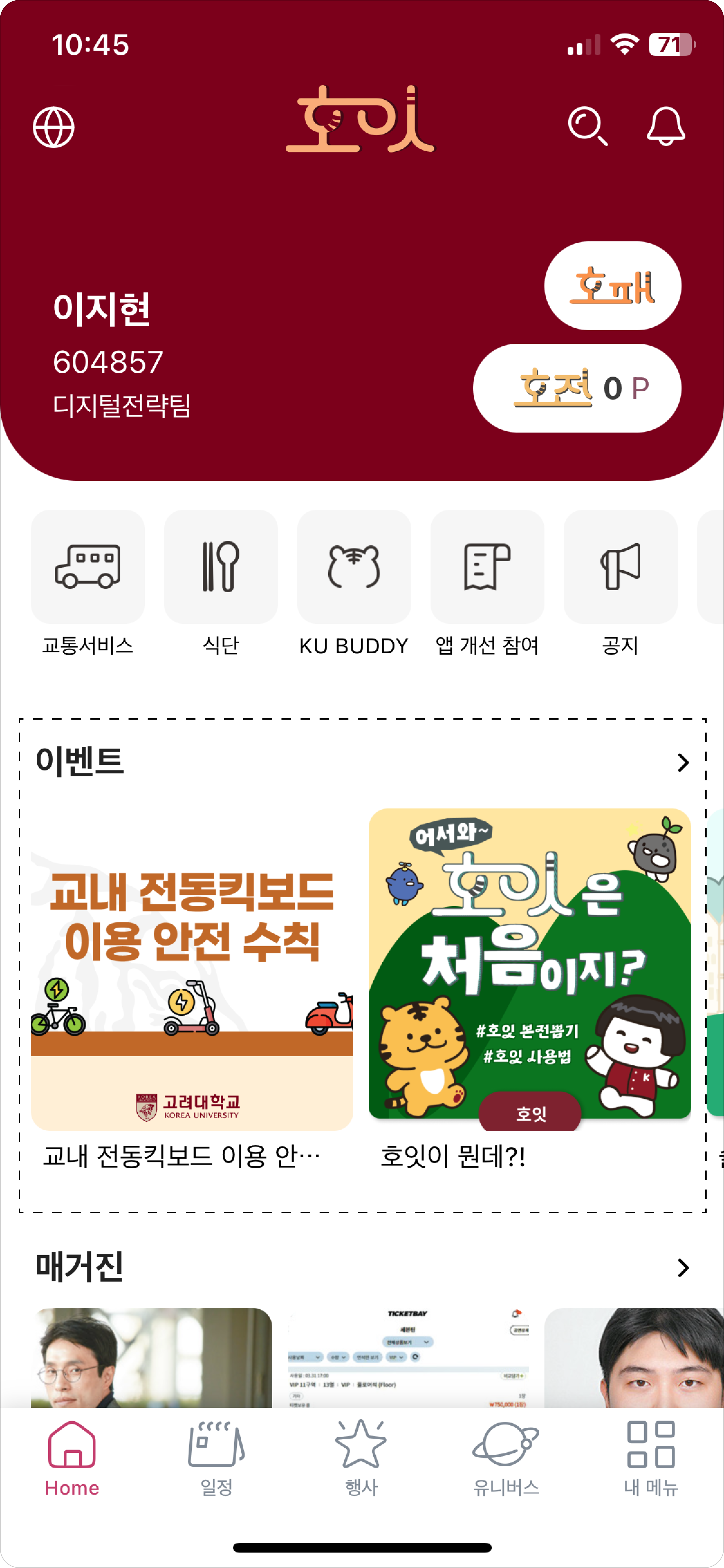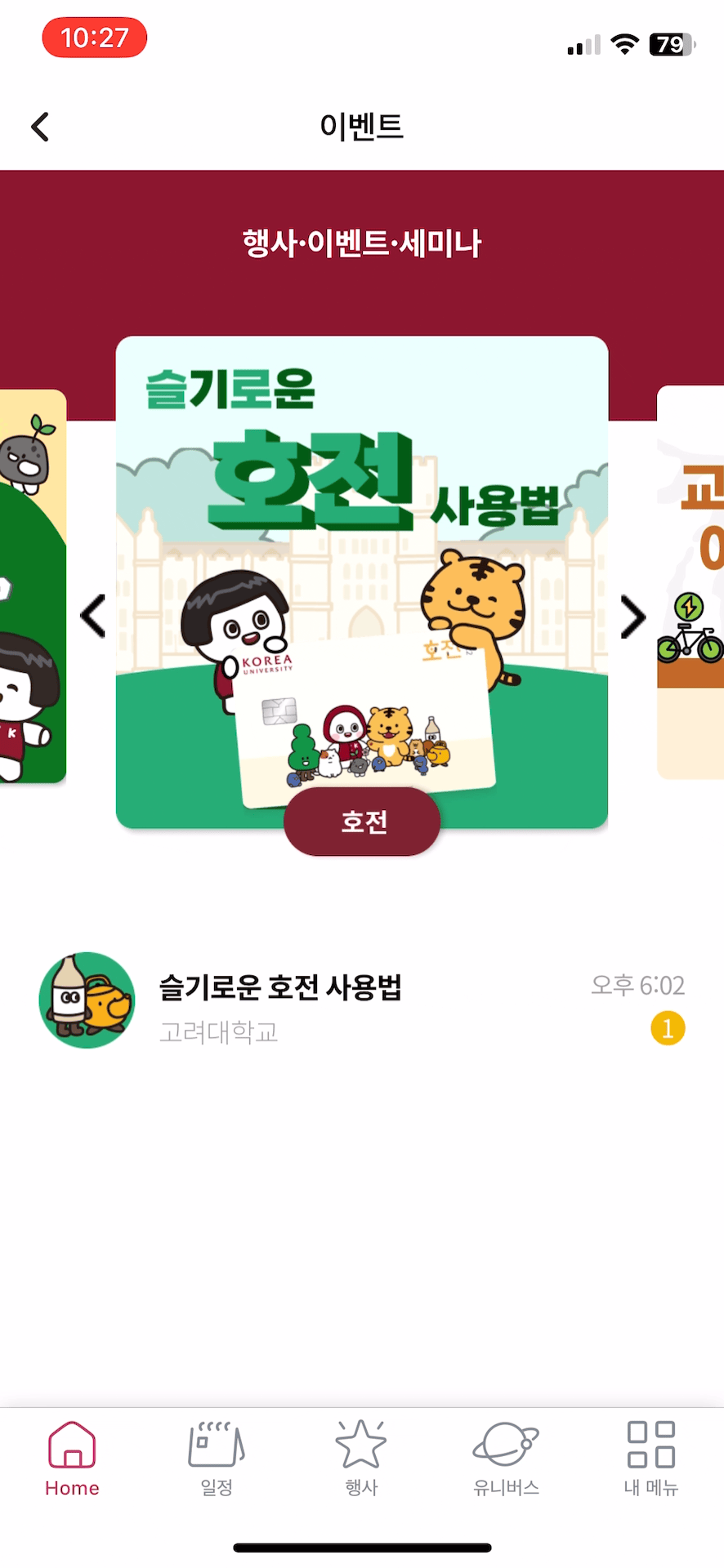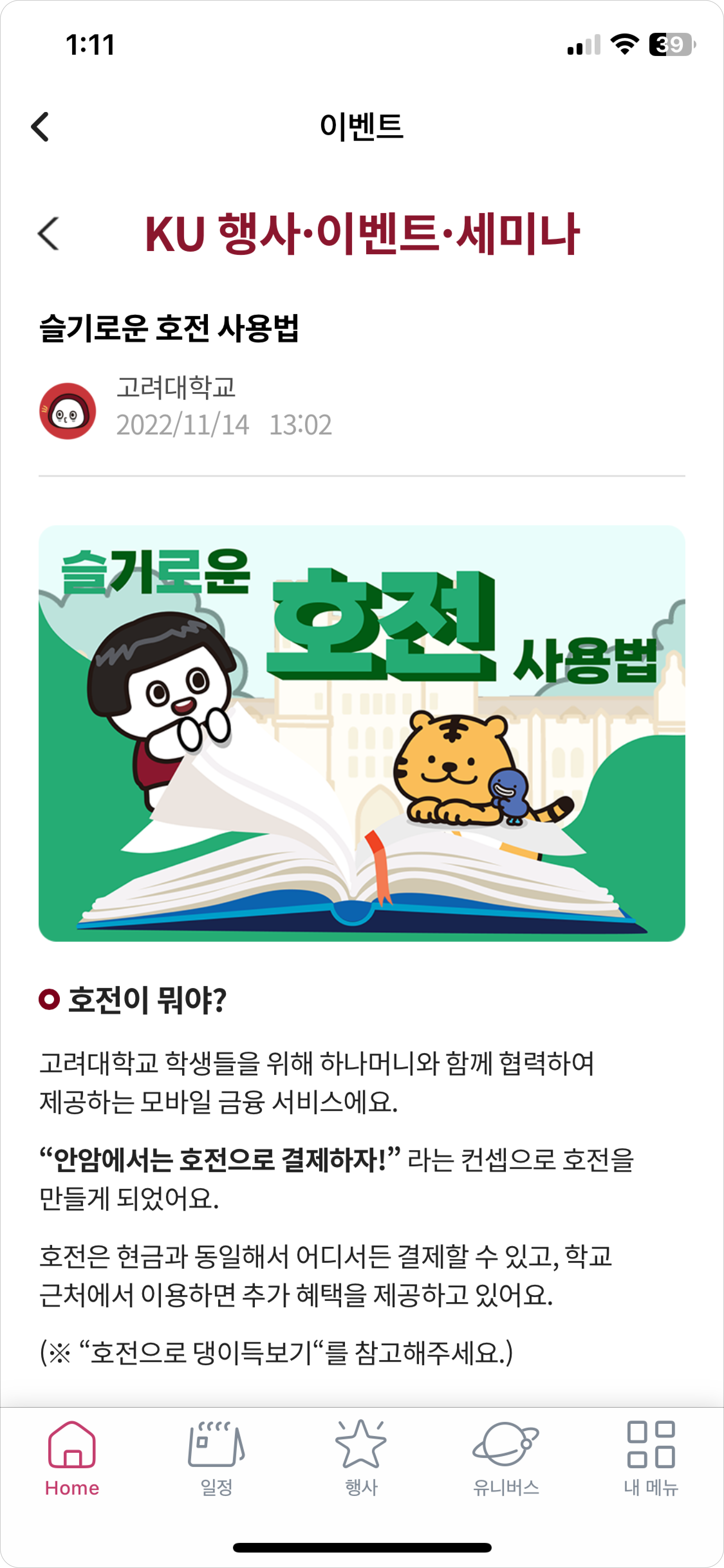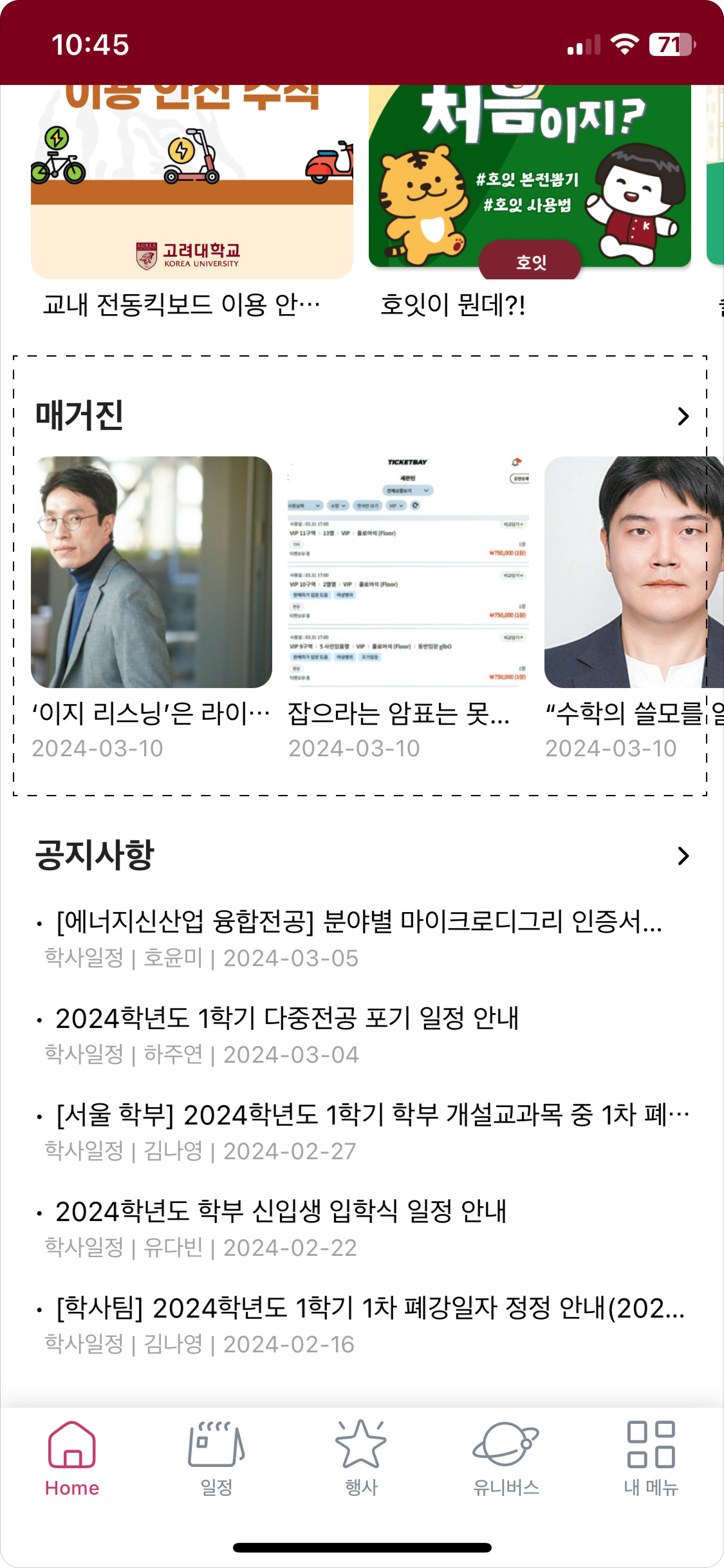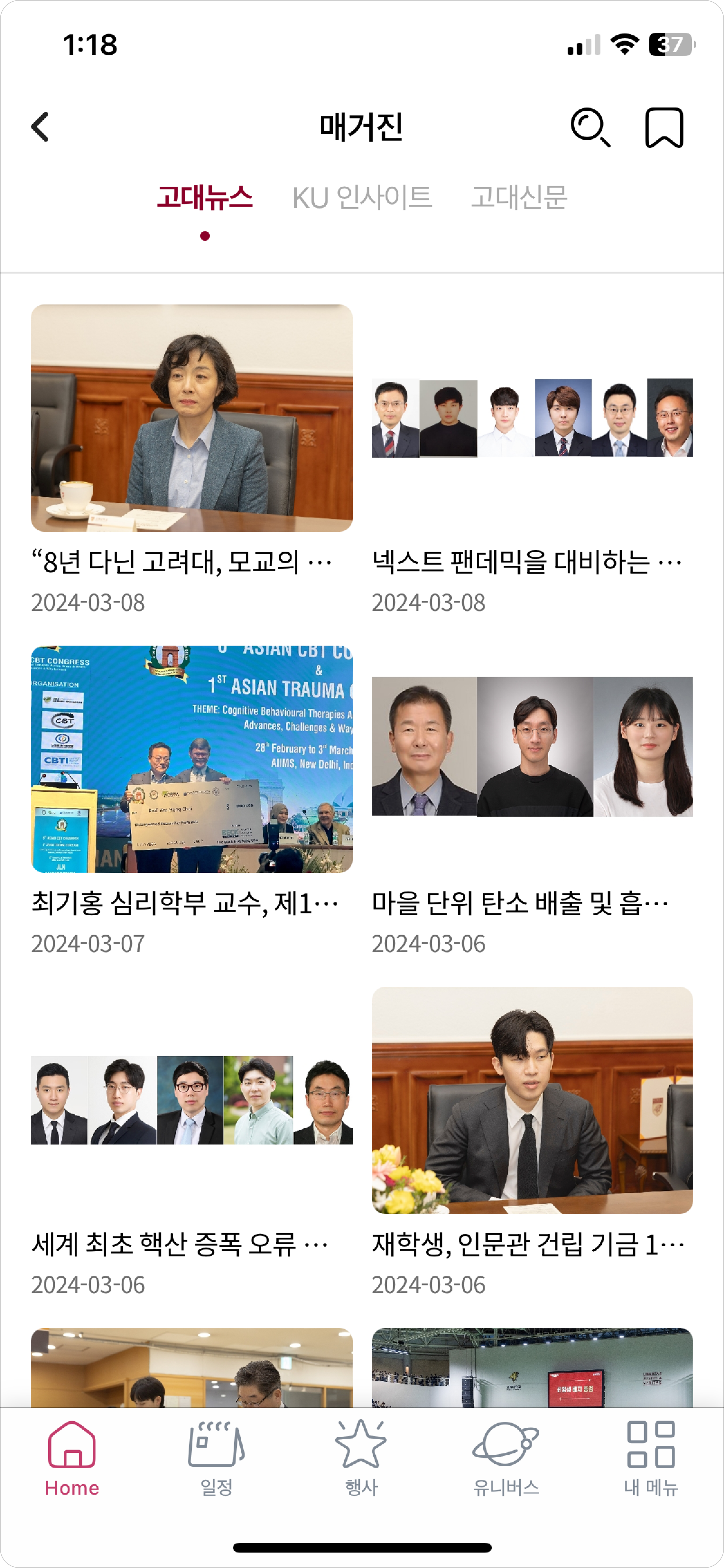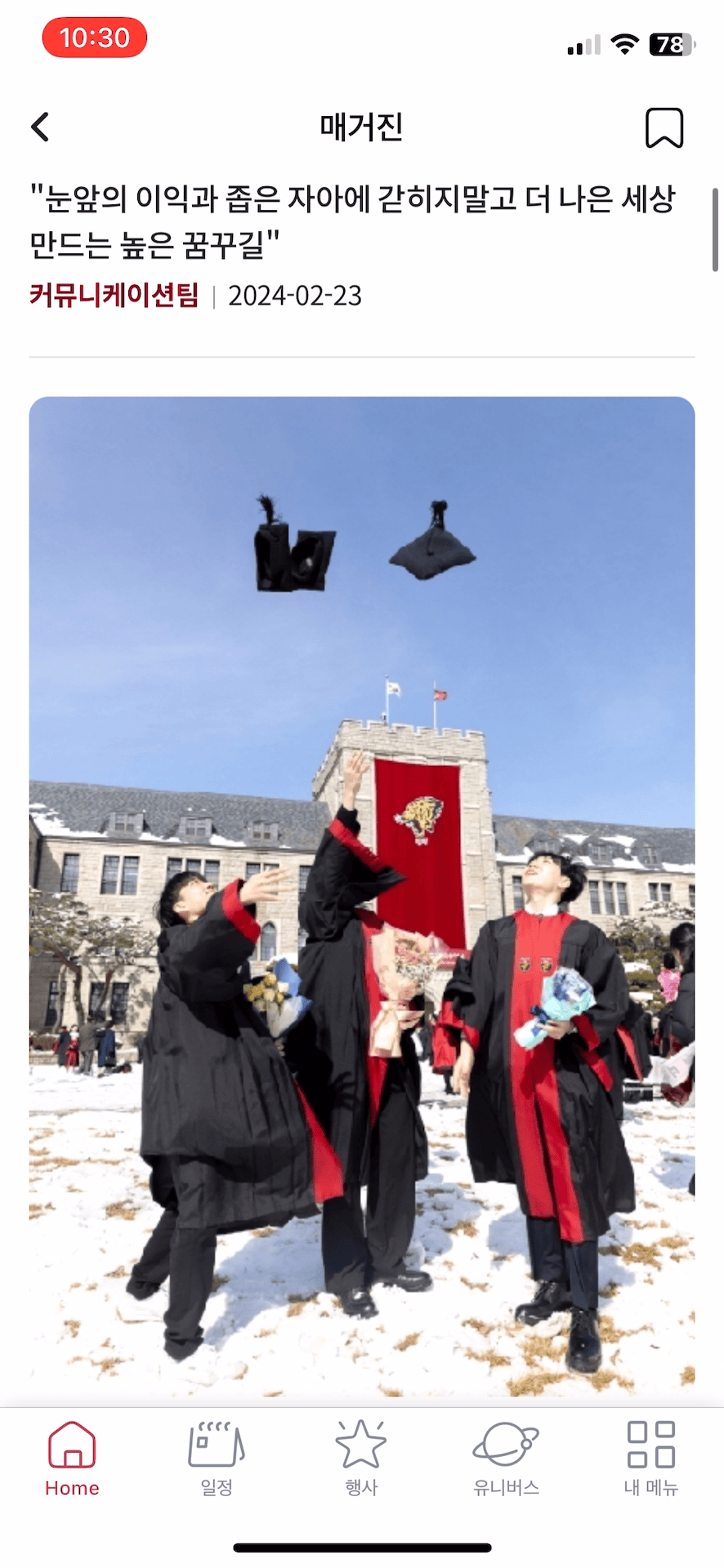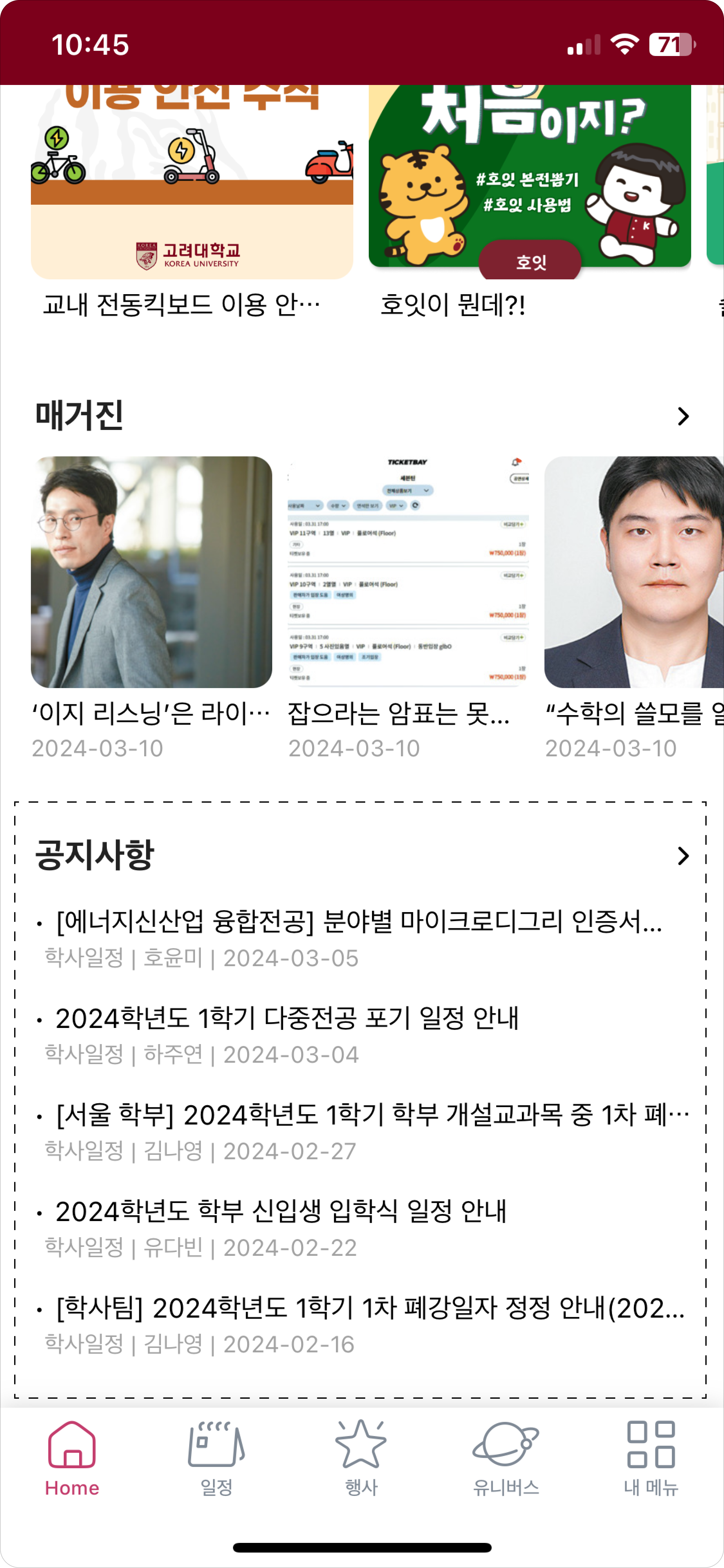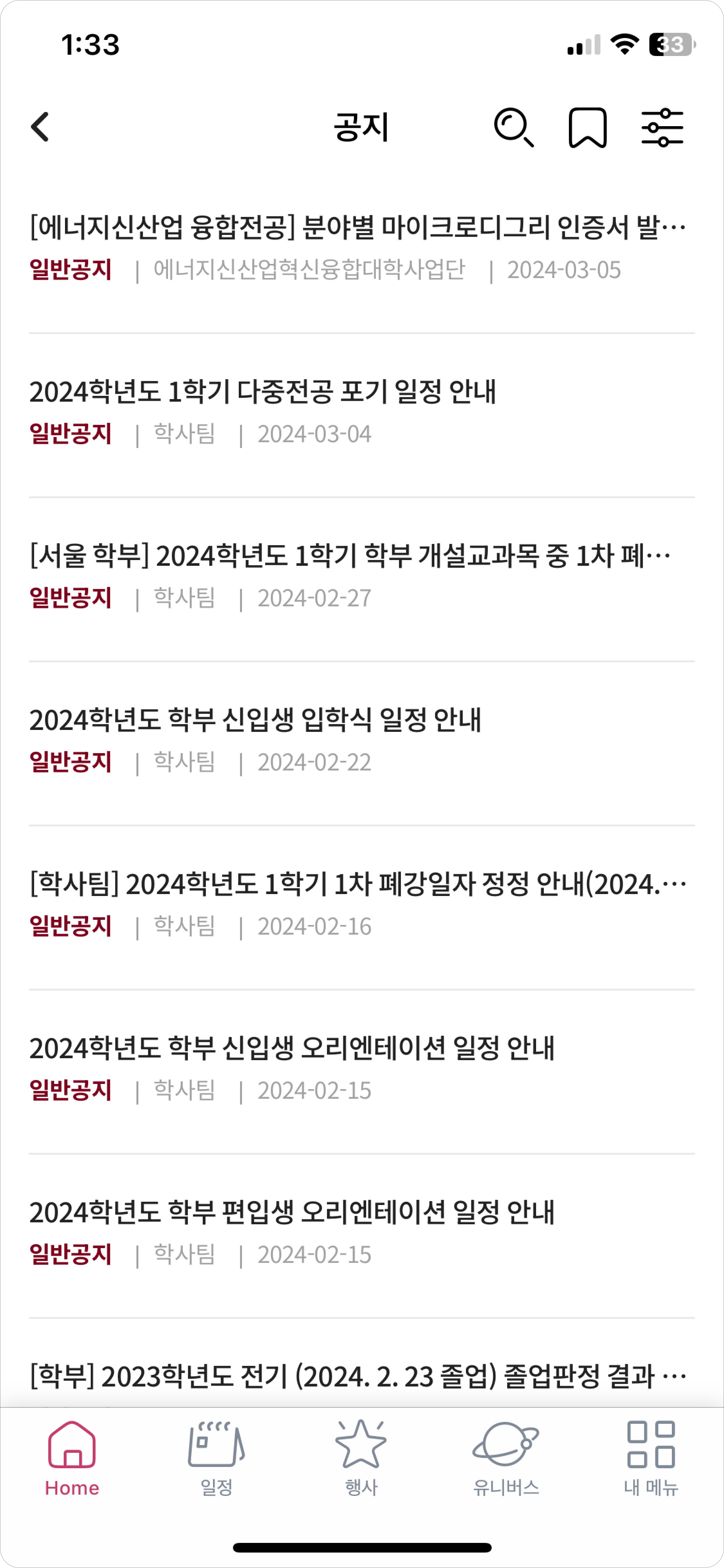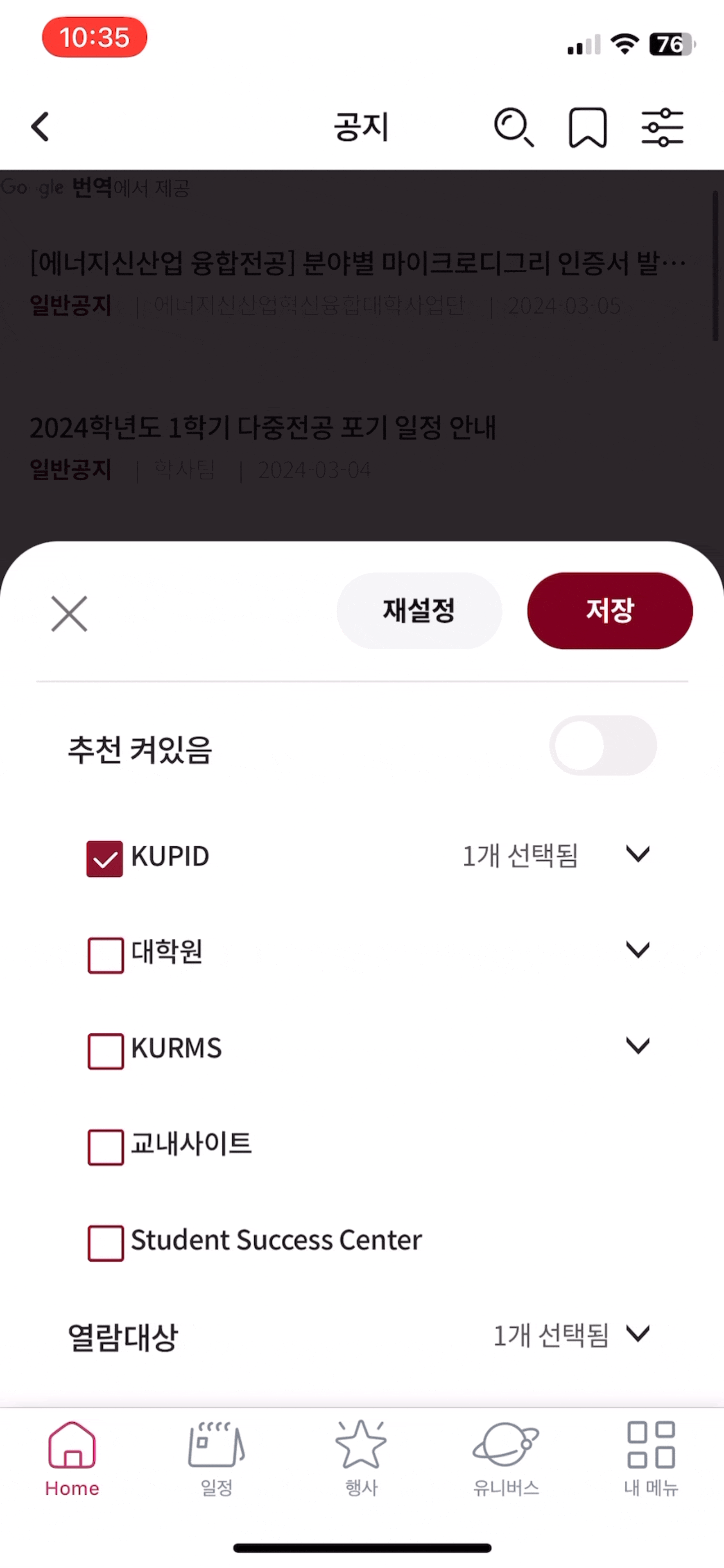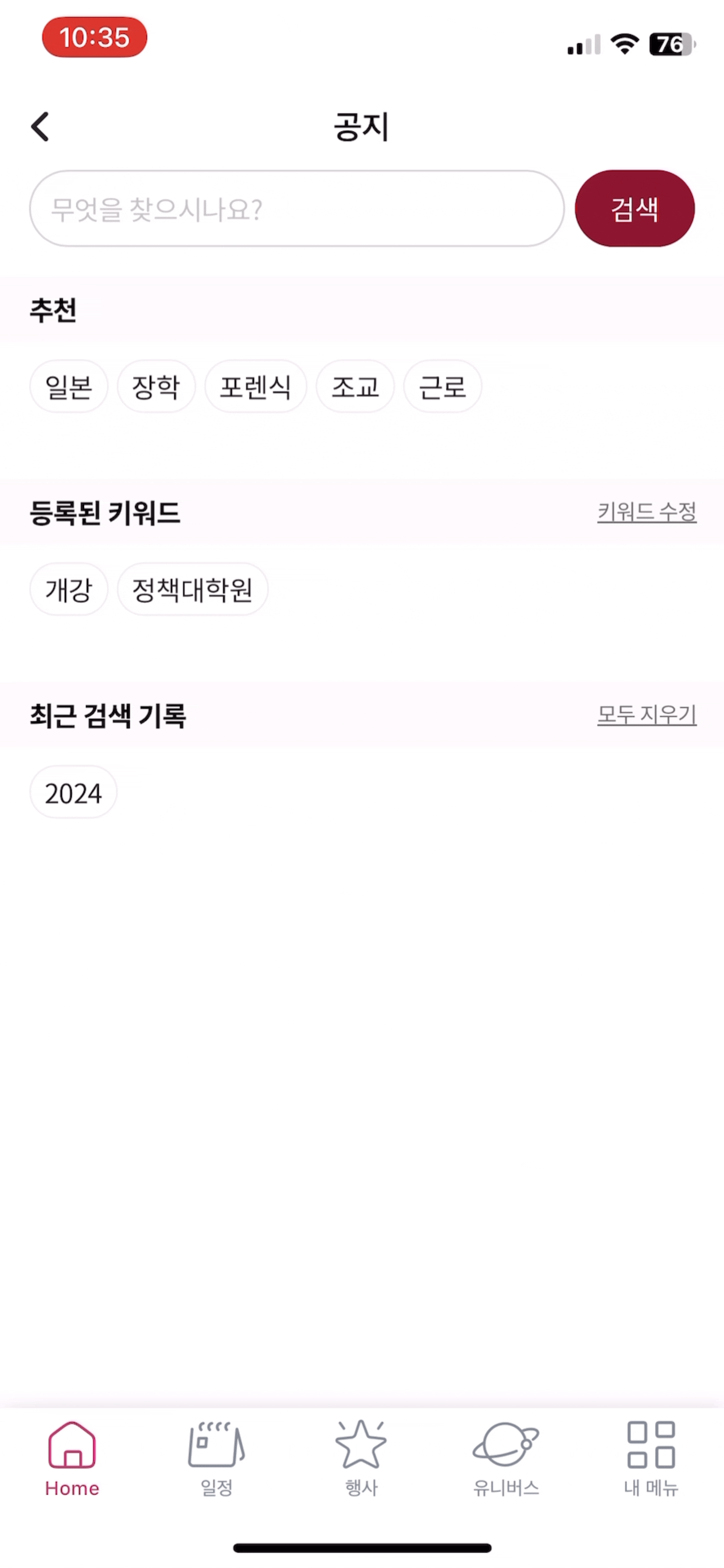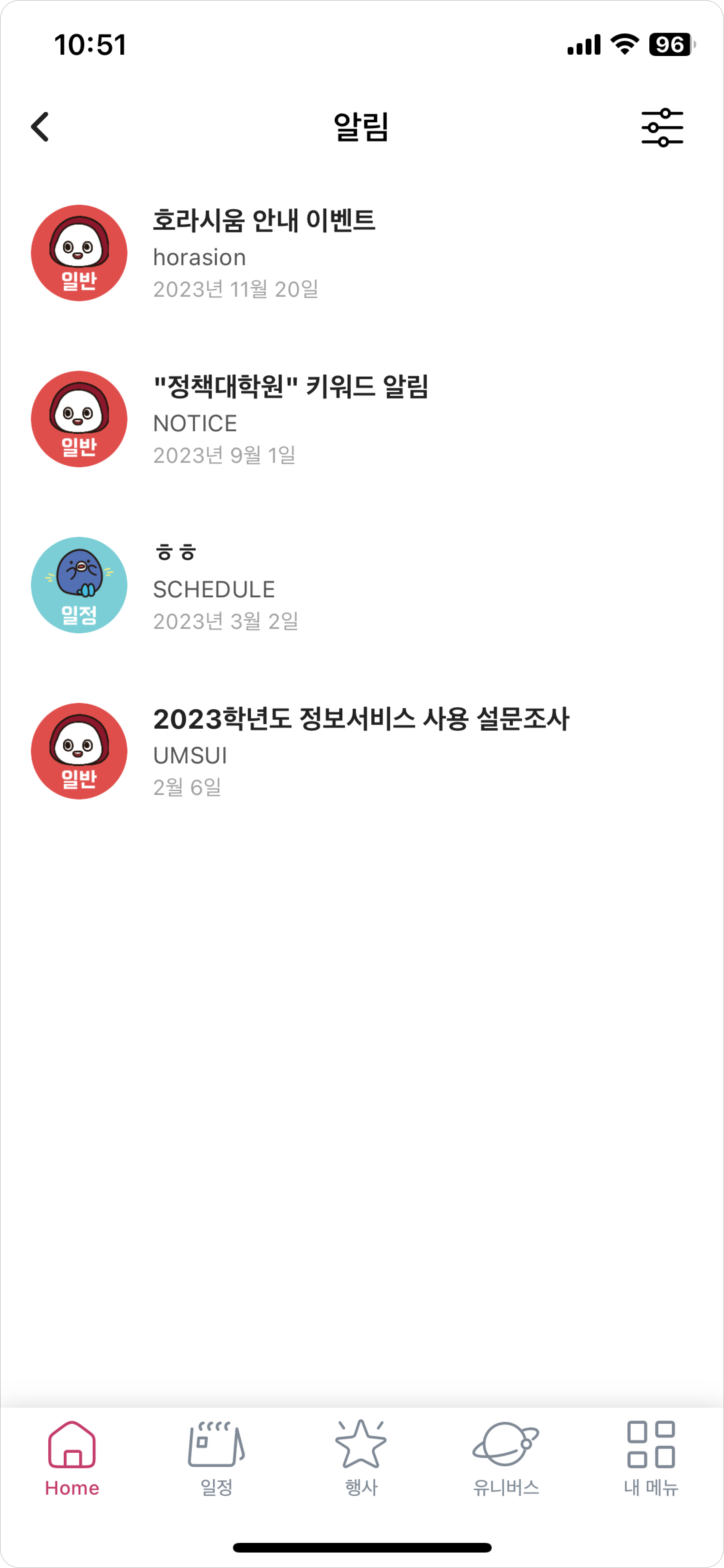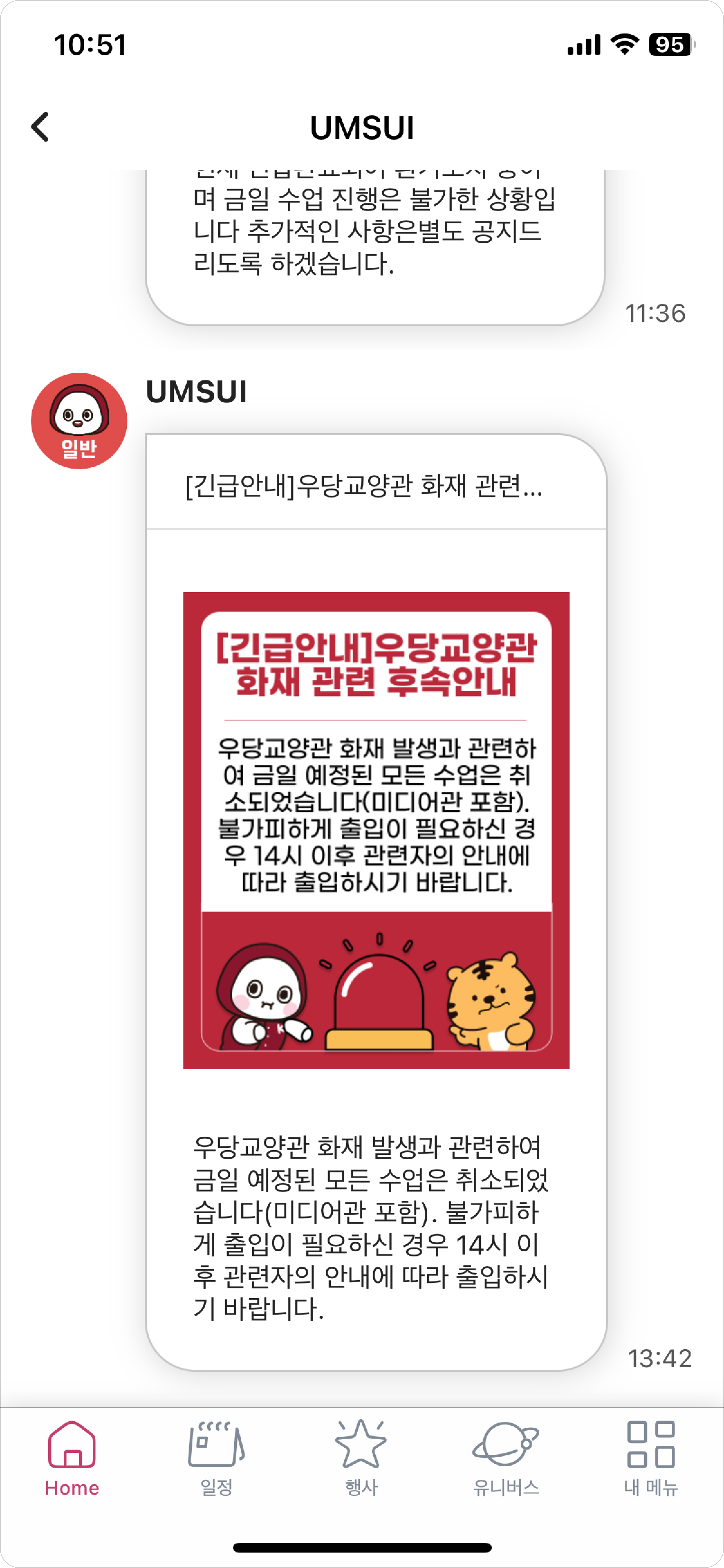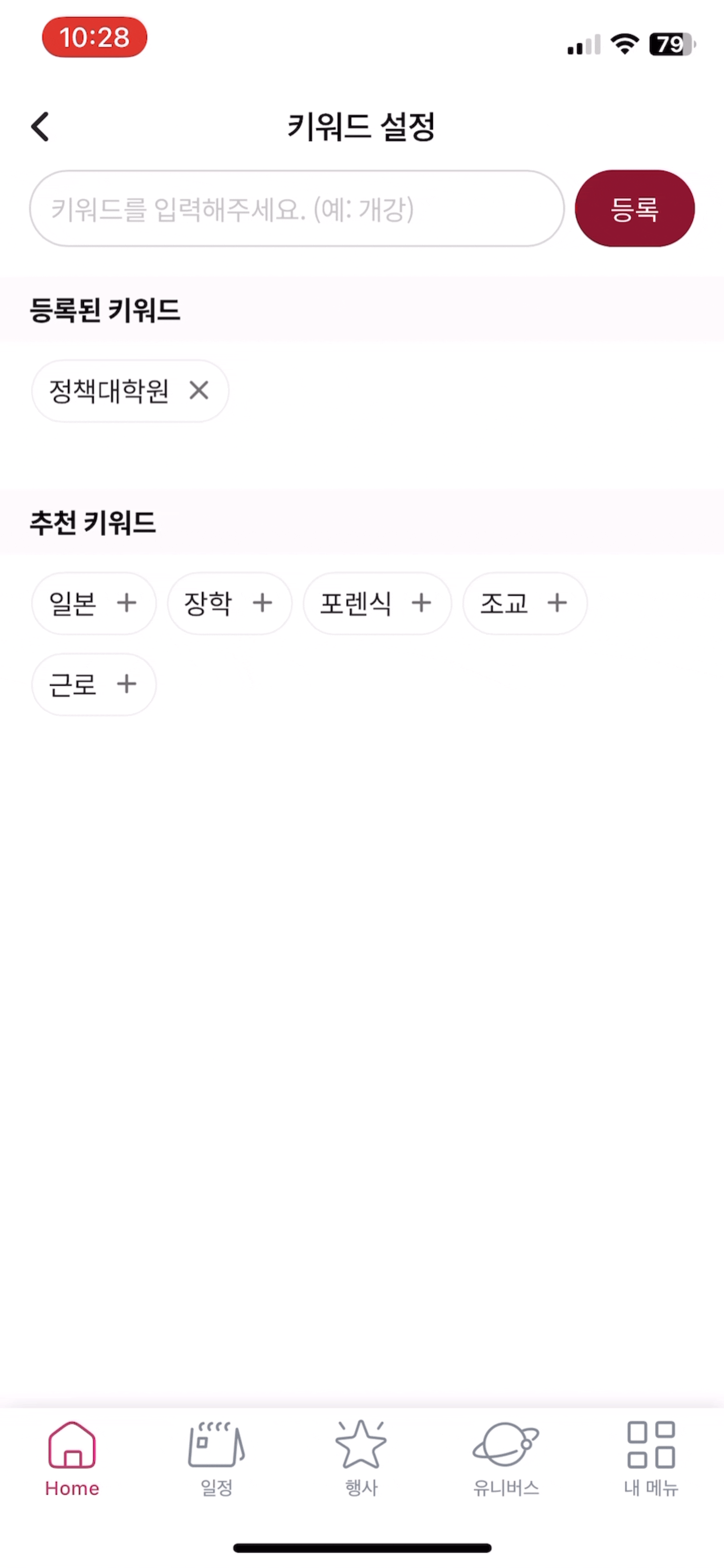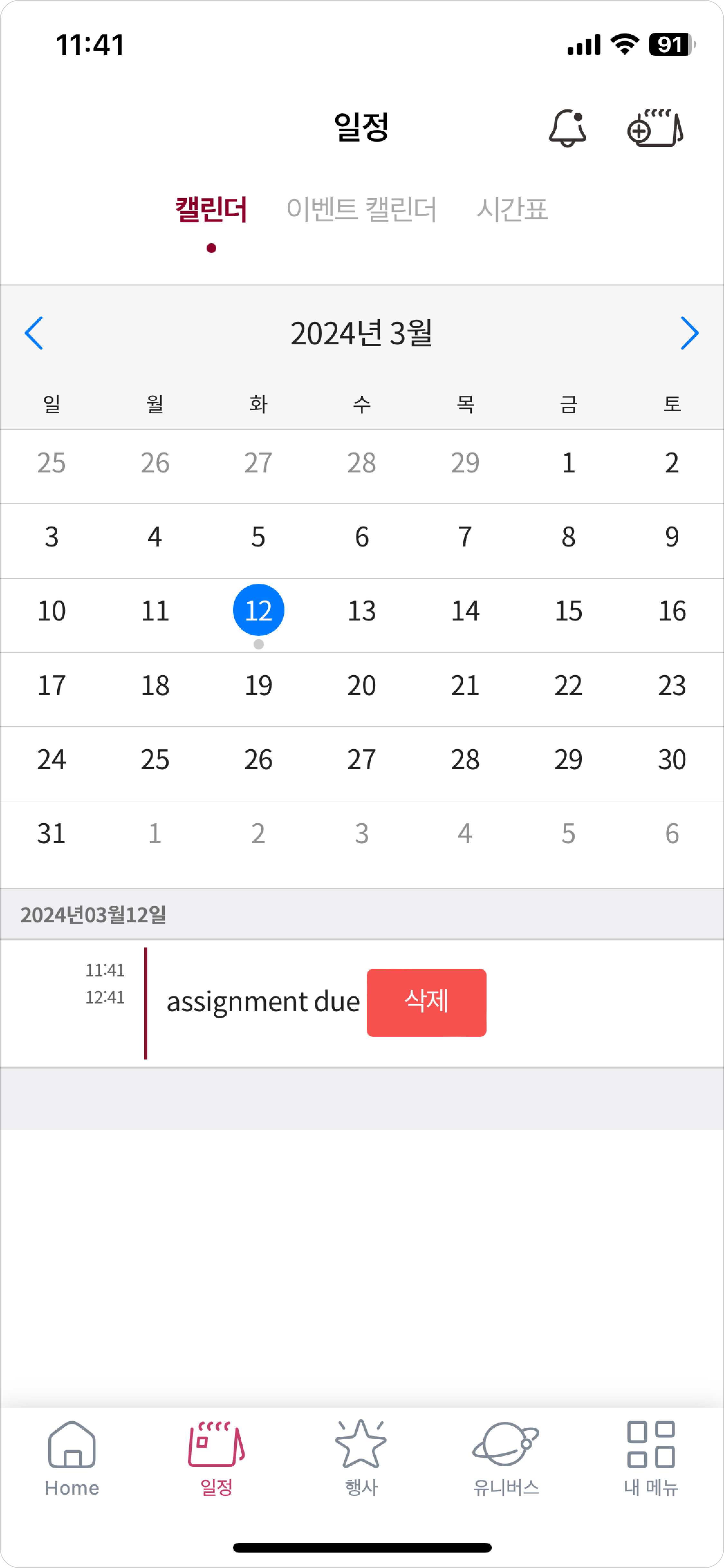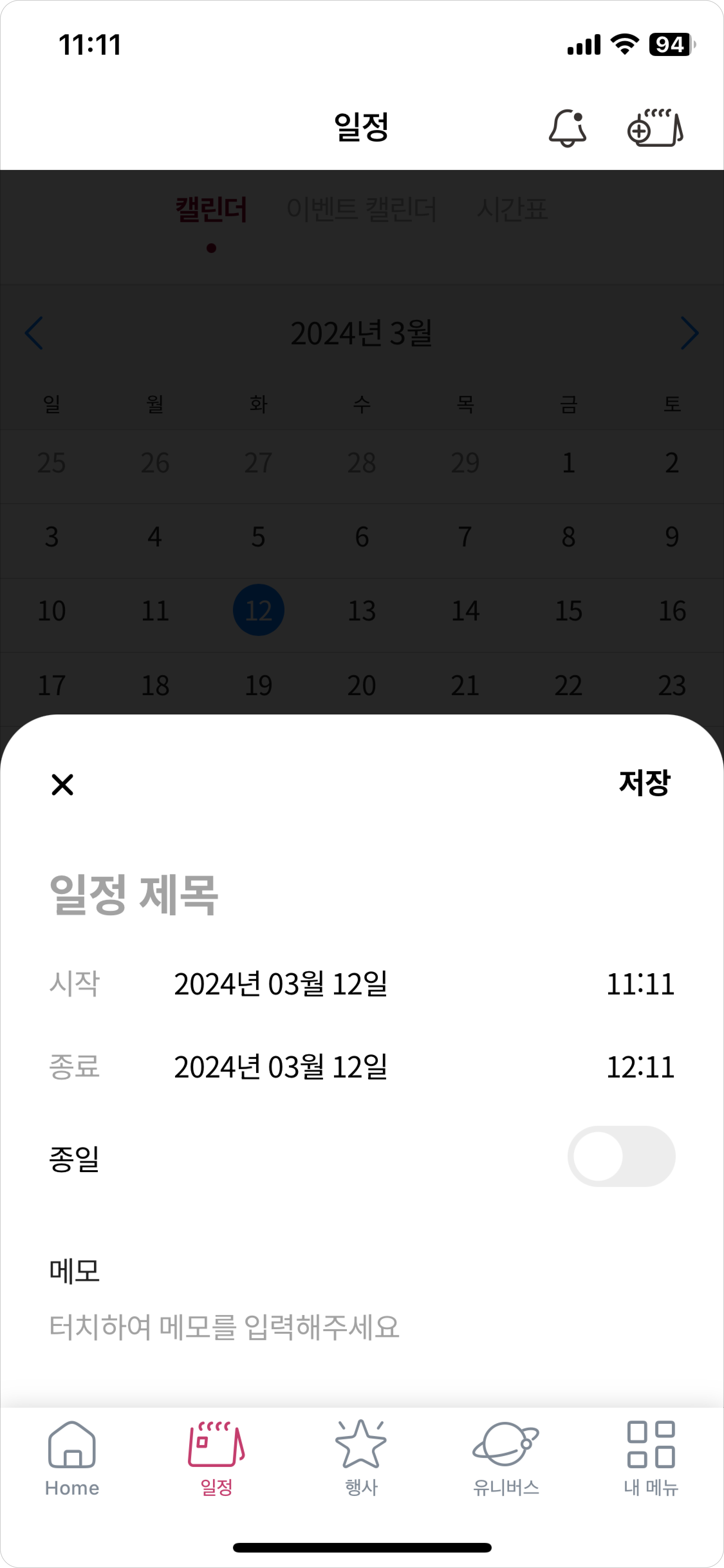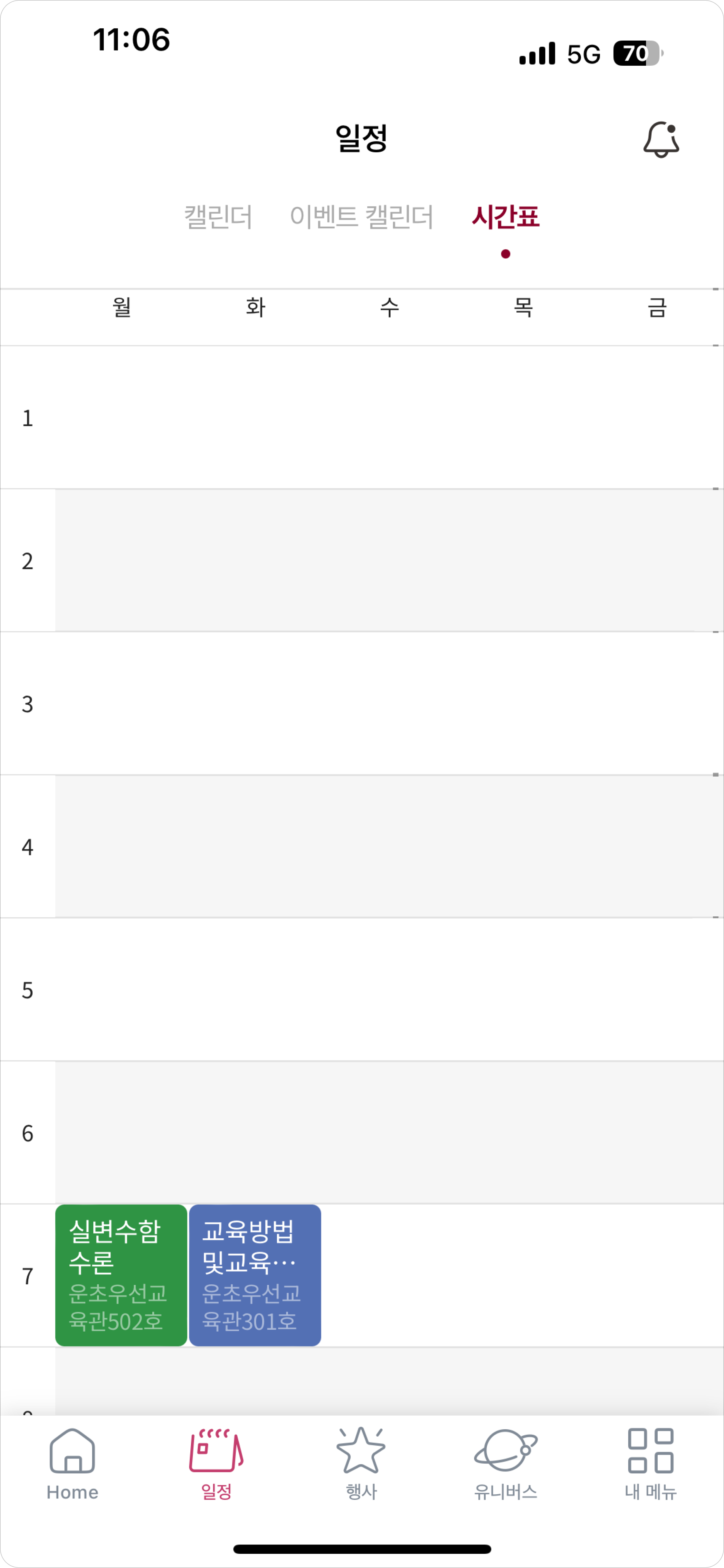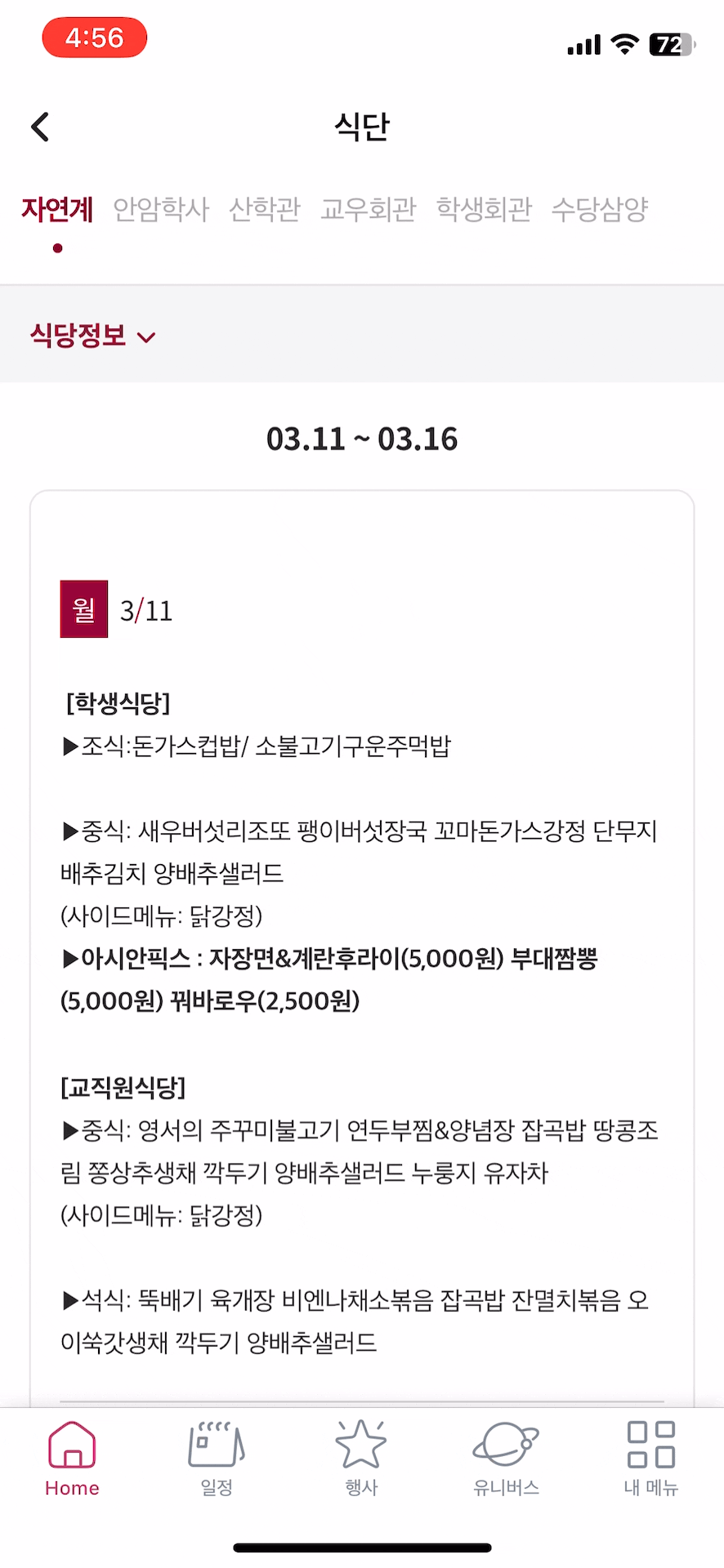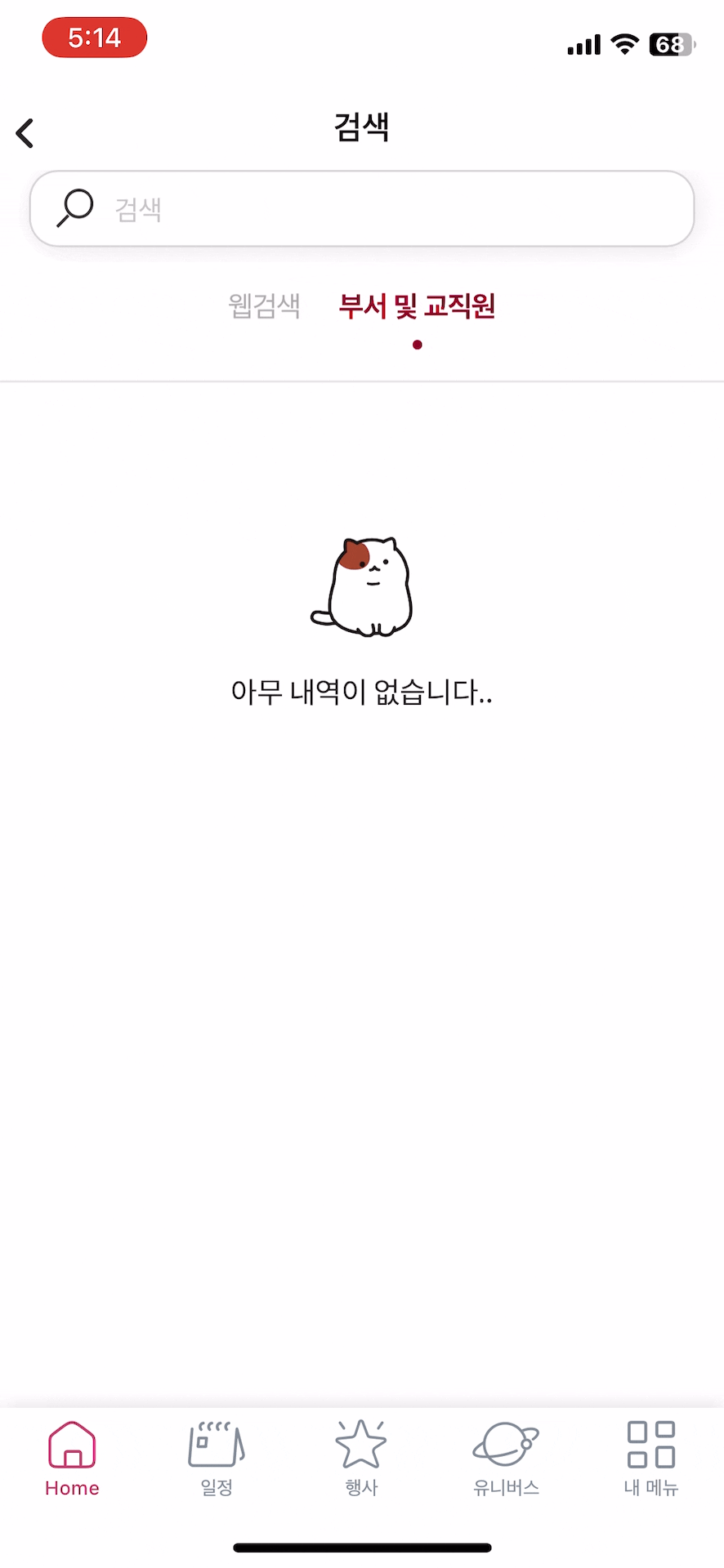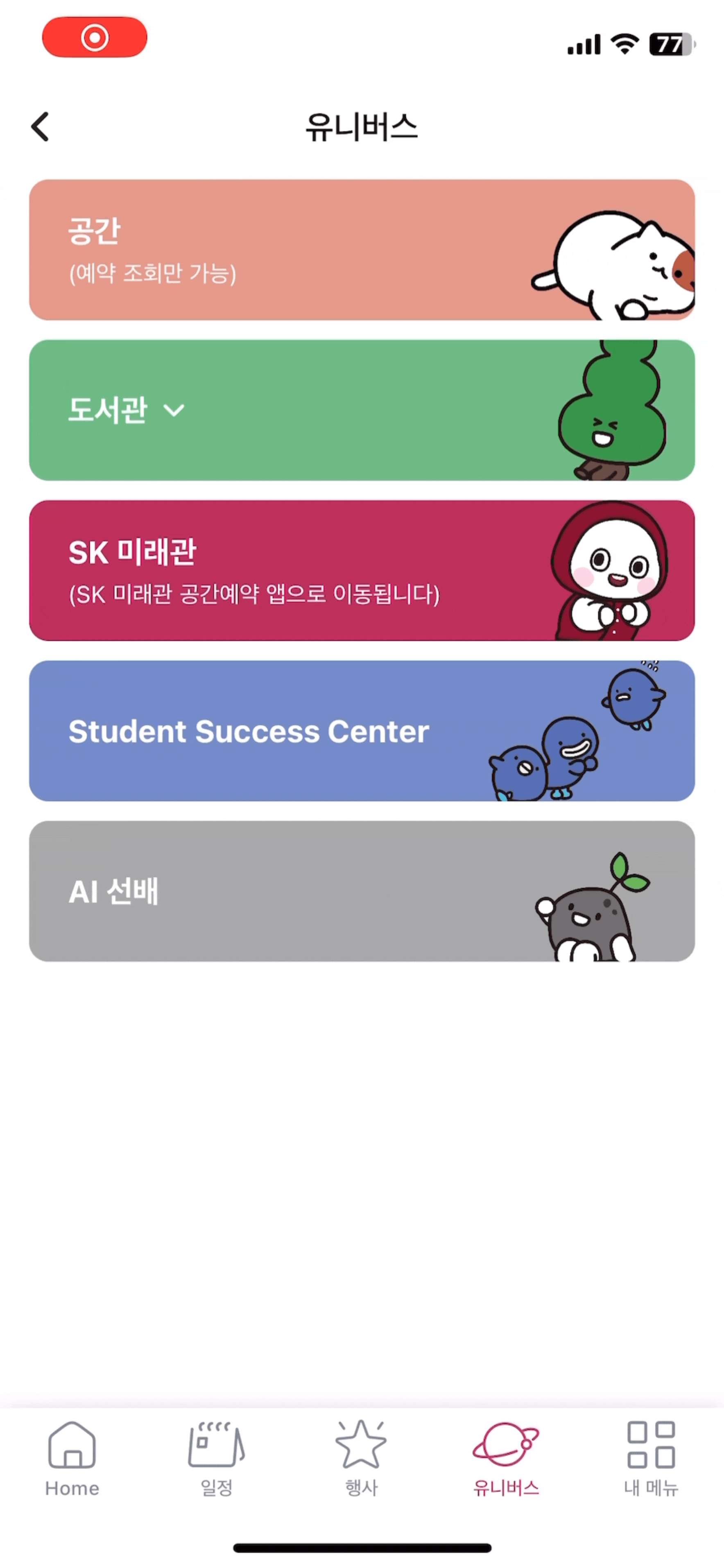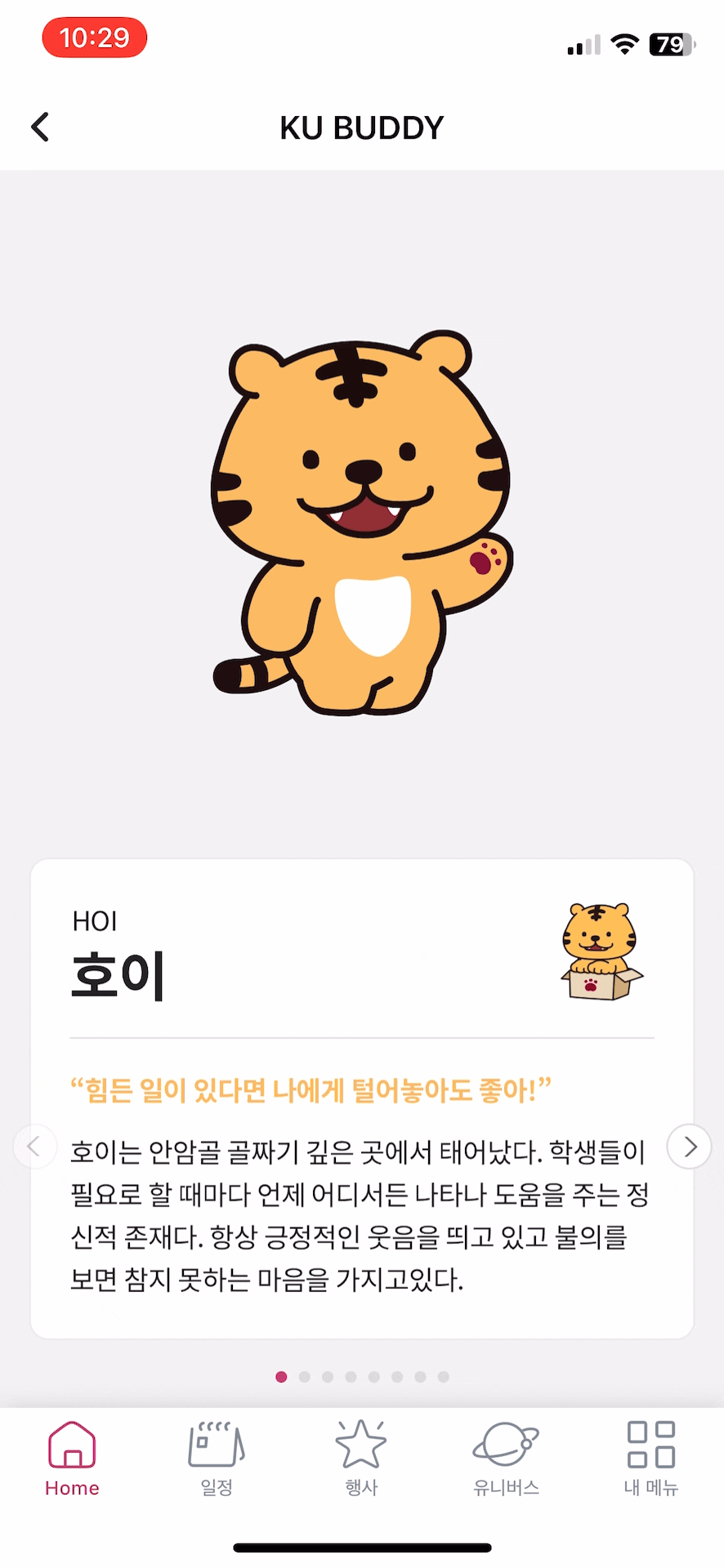Hoit
A service that brings together key campus information and content
from Korea University, offering efficient access to resources.
Play Store
Korea University
UI / UX Design
Figma, Adobe Illustrator
2023-2024

Problem
At Korea University, campus information is fragmented across separate websites with inconsistent interfaces and logins, making access time-consuming and confusing.
Common problems users faced:
- 🔍 Campus information is spread across various unconnected websites
- 🔑 Each site often requires separate logins or navigation
- 🕒 Difficulty accessing simple information like shuttle times or cafeteria menus
- 🌐 Limited support for non-Korean speaking users in a global university setting
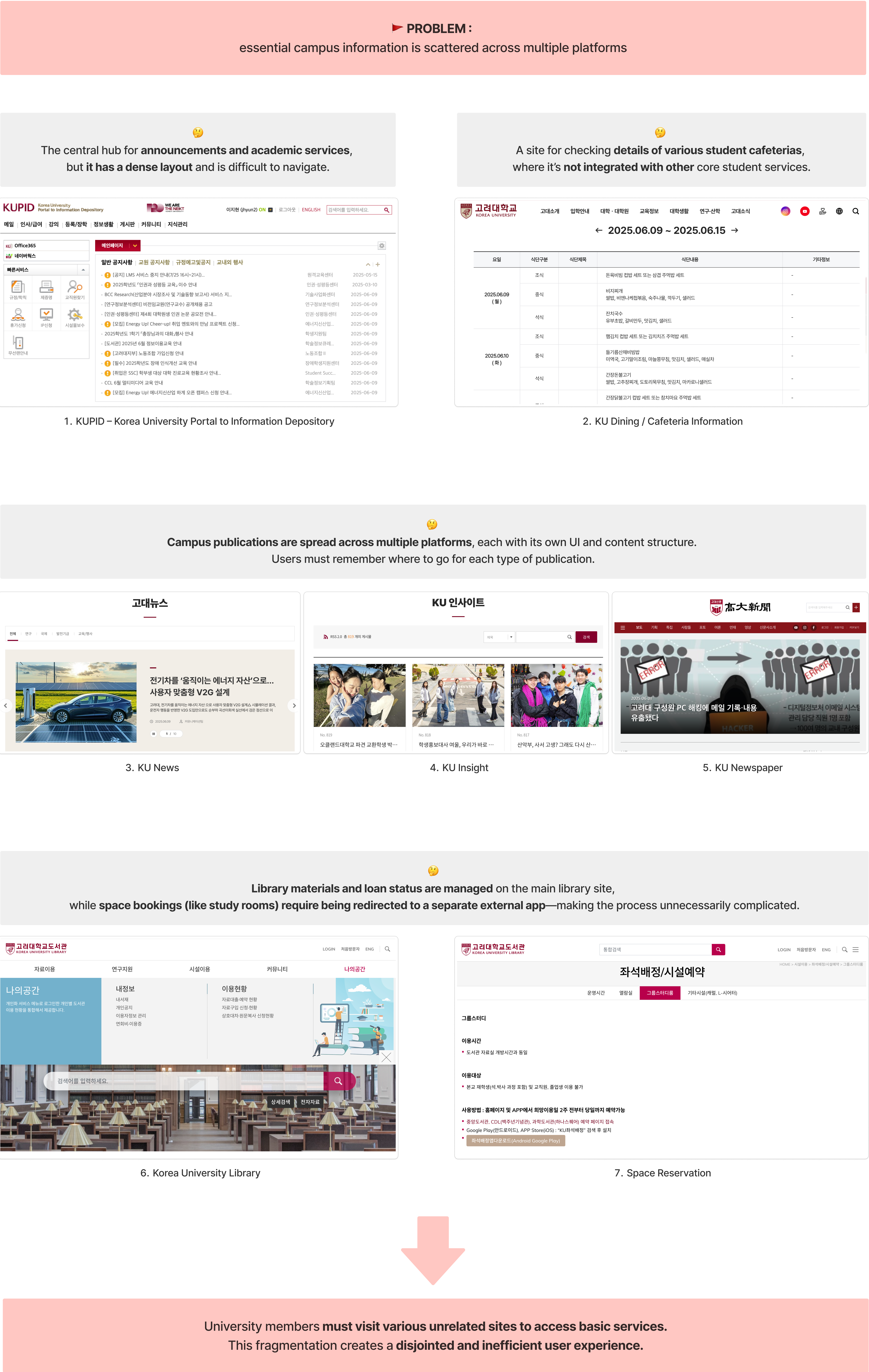
Opportunity
+ Goals
These challenges made it clear that there was a need for a single, integrated service with a unified interface to bring together scattered campus tools and information.
This was the opportunity to create Hoit,
a digital solution designed to:
- 📱 Streamline access to diverse university services
- 🧭 Improve user experience through consistent navigation and UI
- 🧩 Eliminate redundancy by unifying scattered resources into one system
- 🌍 Offer multilingual and inclusive support for the global KU community
Approach
To improve usability and reduce overload, I focused on hierarchy, intuitive flow, and surfacing essential content first — informed by usage patterns observed at Korea University.
🎯 Design Principles and Structure
-
Prioritize frequently used services with accessible layout
Placed the most frequently used services at the top as horizontally scrollable menus, allowing quick, effortless access.
-
Emphasize important content directly below the main menu
To highlight time-sensitive or high-value information, the event section is placed directly below the icon menu for immediate visibility.
-
Establish a clear content hierarchy while reducing visual clutter
High-priority content is placed at the top, while less critical items are pushed lower or to the end of the scrolling menu—reducing clutter but keeping everything within reach.

Key Features
This section features key campus announcements and promotions at the top for maximum visibility, using a carousel to display multiple posts efficiently.
The Magazine page consolidates posts from three different campus news boards. To enhance accessibility, the area is divided into tabs, allowing users to view posts by category or bulletin board.
Official notices are sourced from the main portal, but Hoit enhances usability with filters by board and topic, allowing users to quickly find relevant updates.
Horasium, a new event service launched with Ho-it, consolidates Korea University’s scattered event info from various faculty and department boards, improving accessibility and reducing fragmentation.
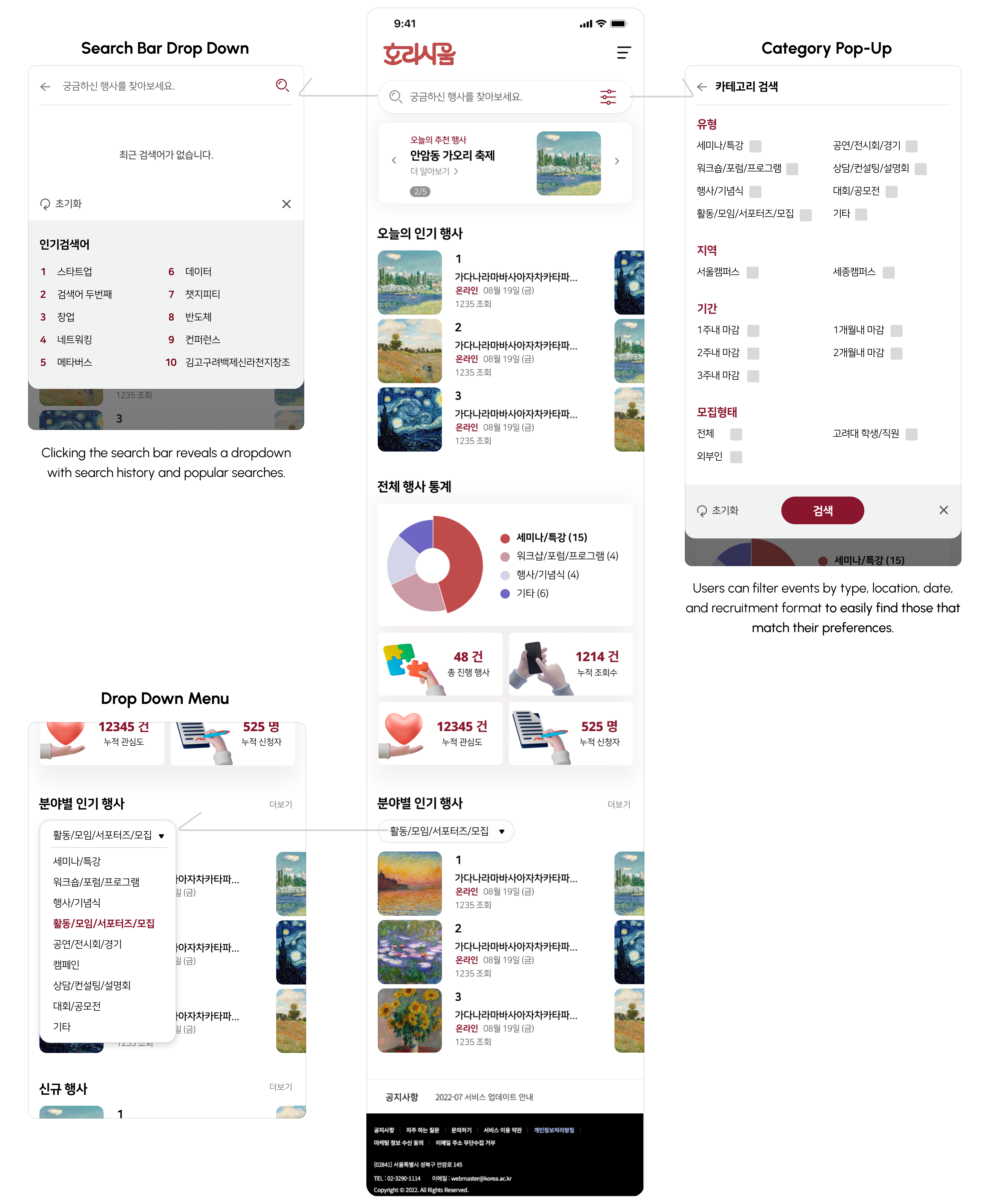
Push notifications alert users to important campus events and safety updates. Users can also set customizable keyword filters for personalized alerts.
The calendar has three tabs: Personal Schedule, Campus Events, and Class Timetable. This setup makes it easy for users to navigate between their own plans, academic schedules, and campus activities.
Student Cafeteria
Menus for each student cafeteria are organized in tabs. Users can expand or collapse details with a click for easy browsing.
Universe Menu
This page links all Korea University reservation services via Single Sign-On, allowing seamless access without additional logins when using Hoit.
Result
📈 Impact + User Feedback
- 66% of the ~50,000 university members adopted the service after launch.
- 1,163 users responded to a survey across students, faculty, and staff.
- Most used features: announcements, cafeteria info, library Booking, and shuttle bus service.
- 1 in 3 rated the service positively, under 10% rated it negatively.
- International users showed lower awareness and satisfaction.
Takeaway
💡 Key Learnings:
- The need for localized onboarding, especially for international users
- The value of in-app guidance to surface key features
- The importance of cross-departmental collaboration for better awareness
🔁 If revisited, I would improve:
- Multilingual onboarding flows
- Lightweight, embedded tutorials
- University-wide communication strategies


